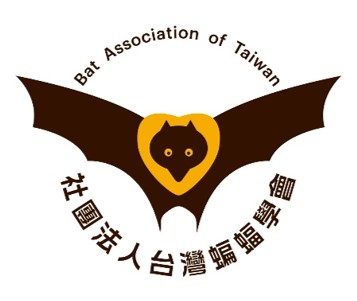蝙蝠研究
1999_陽明山地區台灣小蹄鼻蝠(Rhinolophus monoceros)的族群動態_黃子典
出版年份:1999
研究生:黃子典
分類:碩士論文
題目:陽明山地區台灣小蹄鼻蝠(Rhinolophus monoceros)的族群動態
Title:The population dynamics of formosan lesser horseshoe bat (Rhinolophus monoceros) in Yangmingshan Area
摘要:
本研究是以目測計數、照相計數與捕捉標放的方式,追蹤陽明山前山公園附近一個人工洞穴中,台灣小蹄鼻蝠族群數量、棲息位置、群集大小、性別比例、年齡組成及生殖狀況的變化。在1996年十月至1997年十一月間,先進行不定期的捕捉標放,而自1997年十二月至1999年二月正式進行定期的觀察及捕捉標放。
冬眠期間,研究洞穴中台灣小蹄鼻蝠的數量在100隻以下,隨後數量逐漸增加,生殖期時成蝠數量增加到600餘隻;當幼蝠加入族群後,數量更達1000隻以上的最大數量;之後數量再漸漸減少,形成週期性的年變化。台灣小蹄鼻蝠在冬眠期大都棲息在接近洞口溫度較低處,形成單獨存在或鬆散的小群;此時的性別比例大約接近1:1。冬眠期結束時,雌蝠陸續加入,性別比例變成1:93;同時蝠群回到溫度較高且恆定的洞穴深處,並形成1∼3個100隻以上的緊密育幼群,此時雄蝠多在洞口附近或育幼群周圍單獨棲息。生殖期結束後,100隻以上聚集的大型群集仍然存在,但此時群集中除雌蝠與幼蝠外,成年雄蝠出現的比例上升,洞口附近單獨存在的個體數也開始增加。十二月後蝠群再度進入冬眠期。
台灣小蹄鼻蝠雌蝠的生殖期在五月中到六月中;由雄蝠睪丸腫脹的情形與數量的變化來看,交配期台灣小蹄鼻蝠的交配期可能在秋、冬季。
雌蝠平均懷孕育幼比例約在70%。出生一年的雌蝠約有50%會懷孕育幼,而出生超過一年的雌蝠懷孕育幼的比例則高達90%。雄蝠在出生當年的十二月之後,約有50%睪丸有腫脹的現象。顯示台灣小蹄鼻蝠幼蝠在出生一年內即有二分之一可以達到性成熟。
冬眠期研究洞穴中雄性台灣小蹄鼻蝠有60%以上是出生超過一年的個體;其他時間則有50%以上的個體是出生一年者。1998年九月之前,雌蝠的年齡結構都相當穩定,70∼80%是出生超過一年以上的個體;九月後,大部分的雌蝠遷離研究洞穴,才使年齡層下降。
從族群數量的波動、性別比例與年齡結構的變化發現,大多數的雌蝠並不在研究洞穴渡冬,研究洞穴對台灣小蹄鼻蝠的雌蝠是一個適合的育幼棲所,但卻不是適合的渡冬棲所。
Abstract:
The population size, habitat, group size, sex ratio, and reproduction state of formosan lesser horseshoe bat were studied by visual emerge count, photo count and mark-recapture in a artificial cave in Yangmeansan Area from October1997 to February 1999.
The population size of bats seems appear annual rhythm that was below 100 in studies site in hibernation, 600 increased gradually in subsequent breeding season. In hibernation, the bats were near the entrance of cave where temperature was lower. Meanwhile, the sex ratio of bats was about 1:1. After hibernation, due to the female immigrate to the cave, and the sex ratio became 1:93. In breeding season, the bats were in deeper cave where temperature was higher and consistence. They formed 1~3 closing breeding group with above 100 individuals that constituted of female and juvenile. The male bats resided alone or around the breeding groups in breeding season. The Closing group with above 100 individuals was present after breeding season, added male bats increased the ratio of male in the groups in subsequence hibernation at December.
The breeding season of the formosan lesser horseshoe bat was between May and June. And the mating season of the formosan lesser horseshoe bat may be in autumn and winter.
The 70% female bats were pregnant in the breeding season in the cave. The 50% female bats were pregnant during the first year of life. The ratio of pregnant female bats whom older than one year was 90%. There were 50% male bats who with swelling testis after December. Weather the first year of these lives that suggested at lest a half of male bats was capable of reproductive within one year old. In studies cave, sixty percentage of hibernating male bats were older than one year. The other time, fifty percentage of male bats were younger then one year.
The fluctuation of population size, sex ratio, and age constitution suggested the most of female bats were not hibernate in studies cave.
